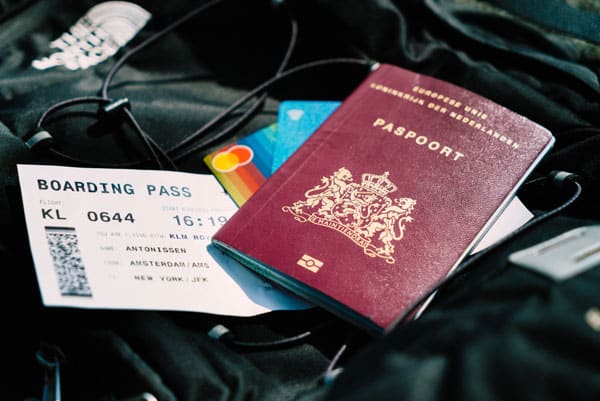Philippine visa processing times vary: retirement visas take 1-3 months, while investor visas require 6-12 months.

Types of Permanent Visas in the Philippines
| Visa Type | Description | Required Time for Processing |
|---|---|---|
| Quota Visa | Issued to nationals from countries with diplomatic ties to the Philippines. Limited number each year. | 4-6 months |
| Non-Quota Visa | Available for those who don’t fit into the Quota Visa category. Usually more flexible but with more requirements. | 3-5 months |
| Marriage Visa | For foreign nationals married to a Filipino citizen. Allows for permanent residence in the Philippines. | 2-4 months |
| Retirement Visa | Targeted at foreign nationals who are 35 years old and above and wish to retire in the Philippines. | 1-3 months |
| Investor Visa | For foreign nationals investing a significant amount of money in a business in the Philippines. | 6-12 months |
Application Process
Gathering Required Documentation
Before starting your application for a permanent visa in the Philippines, make sure to gather all the required documentation. These usually include, but are not limited to:
- Valid Passport
- Birth Certificate
- Marriage Certificate (if applicable)
- Financial proof or statements
- Medical clearance
- Police clearance from your country
- Photographs that meet the specifications
Make sure all your documents are authenticated and translated into English if necessary. Check the Bureau of Immigration’s official website for a complete and updated list of required documents.
Filing the Application
After gathering all your documents, the next step is to fill out the appropriate application form. You can usually download these forms from the Bureau of Immigration’s website or get them in person at their offices. Complete the form accurately and attach all necessary documents. Some types of visas like the Investor Visa require a detailed business plan, so make sure to include all the necessary attachments. Once completed, submit your application to the Bureau of Immigration either online, if the option is available, or in person.
Payment of Fees
After filing your application, you’ll need to pay the application fees. The cost varies depending on the type of visa and may include additional charges for processing, notarization, and other administrative tasks. Payments are usually made in the local currency and are non-refundable, so double-check your application before finalizing the payment.
Processing Timeframes
Standard Processing Time
The length of time it takes to process a permanent visa in the Philippines varies by visa type. Generally speaking, here are some approximate timelines:
- Quota Visas usually take around 4-6 months.
- Non-Quota Visas can take about 3-5 months.
- Marriage Visas often require 2-4 months.
- Retirement Visas might be quicker, around 1-3 months.
- Investor Visas are often the longest, ranging from 6-12 months.
You can usually track the progress of your application on the Bureau of Immigration’s official website.
Expedited Options
For those in a hurry, some expedited services may be available. These services come with higher fees but can cut the processing time nearly in half. However, availability of expedited services varies and is often subject to the discretion of the immigration authorities. It’s best to consult directly with the Bureau of Immigration to understand what expedited options may be available for your specific case.
Factors that May Delay Processing
Various factors can contribute to delays in visa processing. Some of these include:
- Incomplete documentation: Missing or incomplete documents will stall your application.
- Holidays and weekends: The Bureau of Immigration is closed on public holidays and weekends, so factor these into your timeline.
- High application volumes: Times of high demand can extend processing times across the board.
- Legal issues: Any kind of legal dispute or complication can significantly delay the process.

Status Updates and Inquiries
Online Tracking
Staying updated on the status of your visa application is crucial for your peace of mind and planning. Most often, the Bureau of Immigration’s official website offers an online tracking system. Here, you can enter your application number and other identification details to check the current status of your application. This feature allows you to see whether your application is pending, approved, or requires additional information.
Contacting the Bureau of Immigration
If you need more detailed information or face any complications, the Bureau of Immigration’s customer service can be an excellent resource. They can provide you with personalized updates and guide you through any additional steps you might need to take. Typically, you can reach them via phone, email, or sometimes even live chat services. Always remember to have your application or case number ready before making an inquiry.
Resolving Issues
If you encounter problems such as delays or requests for additional documentation, act promptly to resolve the issues. This might involve:
- Providing missing documents as quickly as possible.
- Clarifying any discrepancies in your application or documentation.
- Consulting with a legal expert if you encounter complex challenges that could jeopardize your application.
Adjusting Status within the Philippines
Upgrading from a Temporary Visa
If you’re already in the Philippines on a temporary visa, such as a tourist or work visa, you may want to upgrade to a permanent visa. The process involves several steps:
- Visit the local Bureau of Immigration office to inquire about the eligibility requirements for converting your temporary visa to a permanent one. Each visa type has its own set of criteria that you must meet.
- Submit a formal application to upgrade your visa status, along with all the necessary documents. These may include financial statements, employment records, or marriage certificates, depending on the visa type.
- Pay the required fees for converting your temporary visa to a permanent one. These fees are usually higher than the initial visa application fees.
Application for Adjustment of Status
If circumstances in your life change, such as marriage to a Filipino citizen or a new job, you may need to adjust your visa status accordingly. To do so, you need to:
- Obtain and fill out an application for adjustment of status from the Bureau of Immigration. Make sure to indicate why you are requesting the adjustment.
- Collect and attach all necessary supporting documentation, such as marriage certificates, job offers, or financial statements.
- Submit the application and await approval. This can take anywhere from a few weeks to a couple of months, depending on various factors, including the type of visa and the completeness of your application.